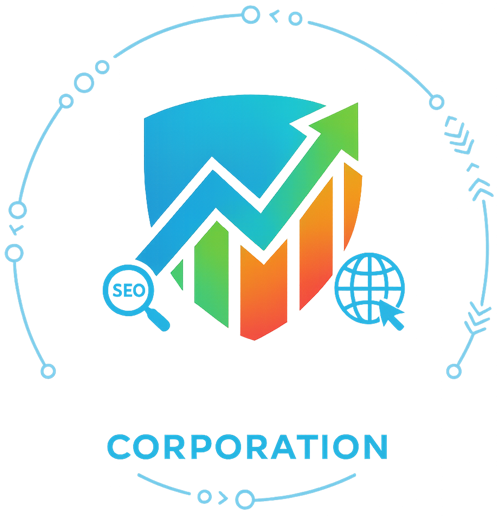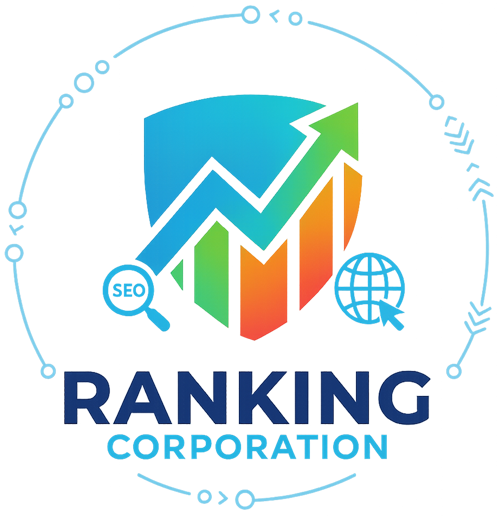
In the rapidly evolving digital landscape, SEO strategies that worked five years ago are no longer sufficient. With the surge of artificial intelligence (AI) in search algorithms, marketers and businesses are increasingly turning to AI-driven SEO to maintain visibility, attract traffic, and achieve higher rankings.
This guide explores how AI is transforming SEO, actionable strategies to leverage AI for ranking higher, and the tools you need to stay ahead in 2025 and beyond.
Chapter 1: Understanding AI in SEO
1.1 What is AI-Driven SEO?
AI-driven SEO refers to the integration of artificial intelligence technologies into search engine optimization strategies. Unlike traditional SEO, which relies on static rules and manual analysis, AI-driven SEO leverages machine learning, natural language processing, and predictive analytics to:
- Analyze user intent
- Identify content gaps
- Optimize content for search engines automatically
- Predict ranking potential for target keywords
Google’s own AI advancements, including BERT (Bidirectional Encoder Representations from Transformers) and MUM (Multitask Unified Model), demonstrate the importance of AI in understanding context, language, and search intent.
1.2 How AI is Changing SEO
- Semantic Search: AI allows search engines to understand the context of queries, rather than just matching keywords.
- Predictive Analytics: AI predicts trends and identifies high-potential keywords before they become competitive.
- Automation: AI tools can generate content recommendations, optimize meta tags, and even suggest internal linking structures.
- Personalization: AI customizes search results based on user behavior, location, and preferences.
By understanding AI’s role in SEO, marketers can shift from reactive strategies to proactive optimization.
Chapter 2: Key Components of AI-Driven SEO
2.1 Machine Learning
Machine learning allows SEO tools to analyze large datasets and identify patterns. For example:
- Predicting which keywords will drive the most traffic
- Analyzing user behavior to optimize pages
- Identifying technical SEO issues before they impact rankings
Machine learning algorithms continually learn from user interactions, helping marketers adapt faster to changes in search engine algorithms.
2.2 Natural Language Processing (NLP)
NLP helps search engines understand the intent behind search queries.
- Example: A query like “best SEO tools for e-commerce” is interpreted contextually, not just by the keywords.
- AI-powered content tools can optimize articles for semantic relevance, increasing the likelihood of appearing in featured snippets and voice search results.
2.3 Predictive Analytics
Predictive analytics uses historical data and AI models to forecast trends and ranking opportunities:
- Identifies which keywords or topics are likely to gain traffic
- Suggests content updates before competitors
- Optimizes marketing budgets by focusing on high-potential strategies
Chapter 3: Benefits of Leveraging AI in SEO
AI-driven SEO offers numerous benefits over traditional methods:
3.1 Enhanced Keyword Research
AI tools like Ahrefs, SEMrush, and MarketMuse can analyze millions of keyword combinations to identify:
- High-traffic opportunities
- Long-tail keywords
- Low-competition niches
This helps businesses target the most effective search terms without relying solely on manual research.
3.2 Improved Content Optimization
AI analyzes search intent, identifies gaps, and recommends:
- Optimal headings and subheadings
- Ideal content length
- Keyword density
- Semantic relevance
AI-driven content optimization ensures your pages match what users and search engines expect, boosting ranking potential.
3.3 Competitive Analysis
AI can track competitor strategies, including:
- Backlink acquisition
- Keyword targeting
- Content performance
With predictive insights, marketers can anticipate competitor moves and outperform them in search rankings.
3.4 Enhanced User Experience
AI-driven tools evaluate:
- Page load speed
- Readability
- Mobile optimization
- Navigation structure
Improving UX not only enhances engagement but also signals quality to Google, improving rankings.
3.5 Automation and Efficiency
AI automates repetitive tasks such as:
- Meta tag generation
- Image optimization
- Internal linking suggestions
This frees marketers to focus on strategy and creativity, while AI handles optimization at scale.
Chapter 4: AI Tools Transforming SEO
There are several AI-powered tools that can help businesses implement AI-driven SEO effectively:
4.1 Surfer SEO
- Uses AI to recommend content structure based on top-ranking pages
- Suggests optimal keyword placement, headings, and word count
- Integrates with Google Docs for streamlined writing
4.2 MarketMuse
- Analyzes content gaps and predicts ranking potential
- Provides topic authority scores and content briefs
- Uses NLP to optimize for semantic search
4.3 Clearscope
- Suggests keywords and phrases to improve relevance
- Optimizes content for user intent
- Tracks content performance and provides improvement suggestions
4.4 Ahrefs & SEMrush
- AI-powered keyword research and backlink analysis
- Identifies competitor strategies
- Predicts traffic growth and ranking potential
4.5 ChatGPT & AI Writing Assistants
- Generate optimized content, meta descriptions, and blog outlines
- Suggest FAQs and schema markup
- Enhance readability and semantic relevance
Leveraging these tools effectively requires strategic integration, not just reliance on automation.
Chapter 5: Implementing AI-Driven SEO Strategies
5.1 AI-Powered Keyword Research
- Identify high-potential keywords using AI predictive models
- Focus on search intent alignment rather than exact match keywords
- Use AI insights to target emerging trends before competition
5.2 Content Optimization
- Use AI to generate structured outlines for blog posts or landing pages
- Implement NLP-based suggestions to improve semantic relevance
- Analyze competitor content to identify gaps and opportunities
5.3 On-Page SEO
- Optimize meta titles, descriptions, and alt texts using AI
- Suggest internal linking and content hierarchy improvements
- Ensure content readability and mobile optimization
5.4 Technical SEO
- AI can identify crawl errors, broken links, and duplicate content
- Automate monitoring of Core Web Vitals metrics
- Predict indexing issues before they impact rankings
5.5 Personalized User Experience
- AI can dynamically tailor content to user behavior
- Implement recommendation engines to boost engagement
- Use AI-driven chatbots to improve interaction and dwell time
Chapter 6: Case Studies of AI-Driven SEO
6.1 E-Commerce Website
A fashion retailer implemented AI-driven SEO using MarketMuse and Surfer SEO:
- Optimized 500+ product pages for semantic relevance
- Achieved 30% increase in organic traffic in six months
- Improved average ranking from #12 to #5 for high-value keywords
6.2 Tech Blog
A tech news platform used Clearscope and AI writing assistants:
- Generated AI-optimized content briefs and outlines
- Targeted emerging tech trends using predictive analytics
- Resulted in 45% higher engagement and 25% increase in search visibility
6.3 Local Business
A dental clinic implemented AI-driven keyword research and content optimization:
- Focused on location-based keywords
- AI-generated FAQs improved snippet rankings
- Saw 60% growth in local search traffic within three months
Chapter 7: Future Trends in AI SEO
7.1 Voice Search Optimization
- AI helps analyze conversational queries
- Optimize content for long-tail and natural language queries
7.2 Predictive SEO
- AI will increasingly forecast ranking opportunities before trends emerge
- Early adoption gives brands a competitive advantage
7.3 AI-Powered Content Generation
- AI will assist in creating high-quality content at scale
- Focus will be on semantic depth, engagement, and authority
7.4 Integration with Web3 & Blockchain
- AI may leverage decentralized data for enhanced personalization
- SEO strategies will adapt to trust signals and verified content sources
Chapter 8: Challenges and Ethical Considerations
8.1 Over-Reliance on AI
- Blindly following AI recommendations may result in generic content
- Balance AI automation with human creativity
8.2 Quality and Accuracy
- AI-generated content must be fact-checked
- Ensure sources are reliable and content is original
8.3 Search Engine Compliance
- Avoid black-hat techniques, like AI-generated spam
- Follow Google’s E-A-T (Expertise, Authoritativeness, Trustworthiness) guidelines
8.4 Transparency with Users
- Be clear if content is AI-assisted
- Maintain trust while leveraging AI for SEO
Chapter 9: Actionable Steps to Leverage AI in SEO
- Audit Existing Content: Use AI tools to identify gaps and optimization opportunities
- Target Semantic Keywords: Focus on intent-based optimization rather than exact match keywords
- Enhance Technical SEO: Use AI to detect and fix crawl errors, improve speed, and monitor Core Web Vitals
- Optimize UX: AI insights help improve mobile experience, navigation, and engagement
- Track Performance: Continuously analyze AI-driven recommendations and adjust strategy
Businesses that integrate AI thoughtfully into their SEO strategy gain a long-term competitive advantage.
Conclusion
AI-driven SEO is no longer a futuristic concept; it is essential for ranking higher in today’s search environment. From keyword research and content optimization to predictive analytics and technical SEO, AI empowers marketers to make data-driven decisions, save time, and outperform competitors.
By combining AI tools with human creativity, strategy, and ethics, businesses can achieve sustainable growth in organic search rankings, higher engagement, and better ROI.
In 2025 and beyond, AI will continue to reshape SEO, and companies that adopt AI-driven strategies early will dominate the digital landscape.





